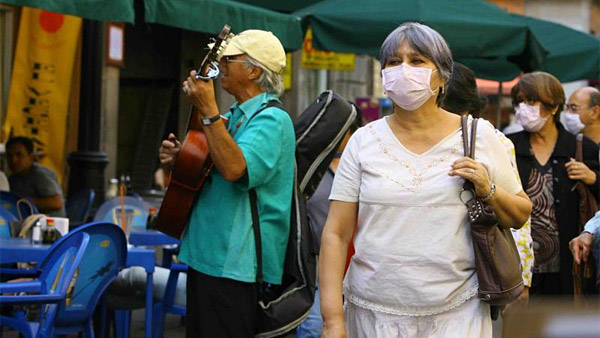
|  |  |  Health & Beauty | November 2009 Health & Beauty | November 2009  
Mexico: Highest H1N1 Deaths in Elderly
 UPI UPI
go to original
November 13, 2009


| | Mexico City residents wear masks as they walk the streets in a restaurant area on April 27, 2009. The death toll from the swine flu epidemic in Mexico doubled on Monday and the World Health Organization raised the alert level. (UPI/Israel Rosas) |  |
Mexico City - This spring when H1N1 flu first surfaced in Mexico younger people were hit the hardest, however, the elderly had a higher risk of dying, researchers said.

First author Dr. Santiago Echevarria-Zuno of the Instituto Mexicano del Seguro Social in Mexico City and colleagues analyzed information gathered by the influenza surveillance system from April 28 to July 31 for patients with influenza-like illness who attended clinics that were part of the Mexican Institute for Social Security network.

By July 31, 63,479 cases of influenza-like illness were reported; 11 percent were confirmed for H1N1, 92 percent were outpatients, 7 percent were admitted to a hospital and survived and less than 1 percent died.

Those ages 10-39 were most affected - 56 percent. Mortality rates showed the greatest risk was for those age 70 years and older - 10.3 percent died of H1N1.

The study also found that the risk of infection was lowered in those who had been vaccinated for seasonal influenza, but delaying treatment or the presence of chronic diseases increased risk.

The study is published online in The Lancet. |

 |
|  |



